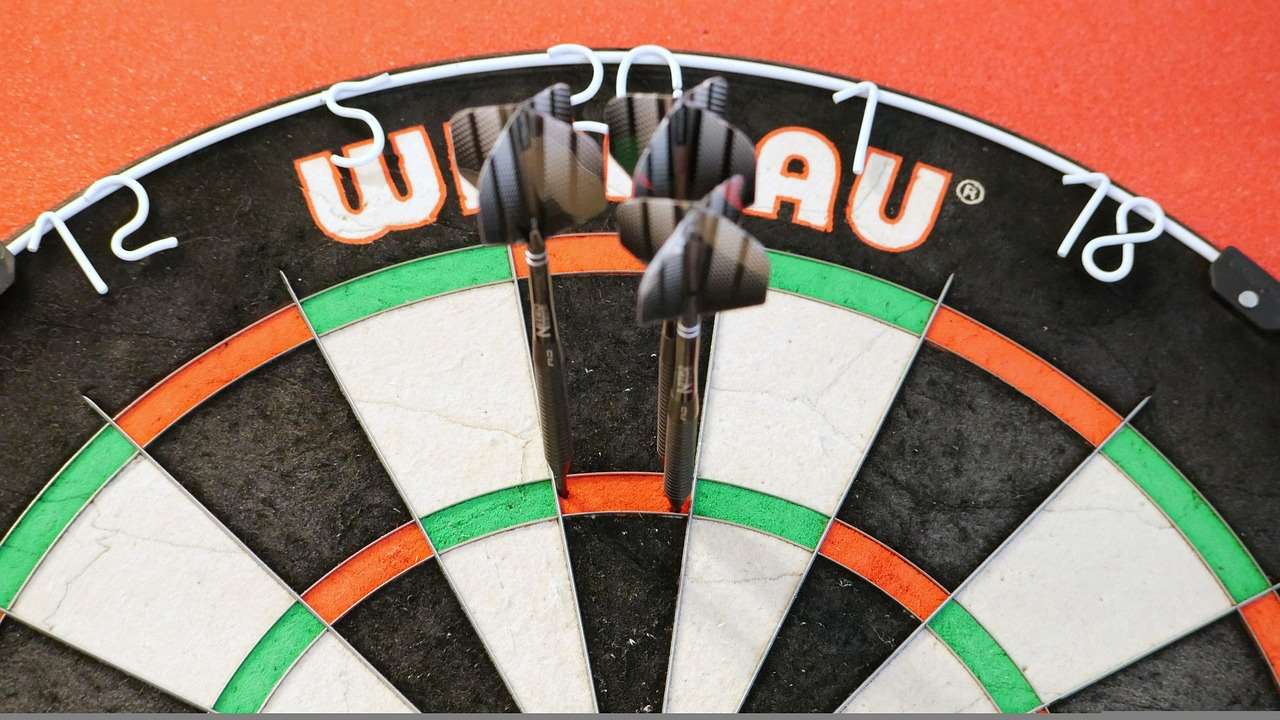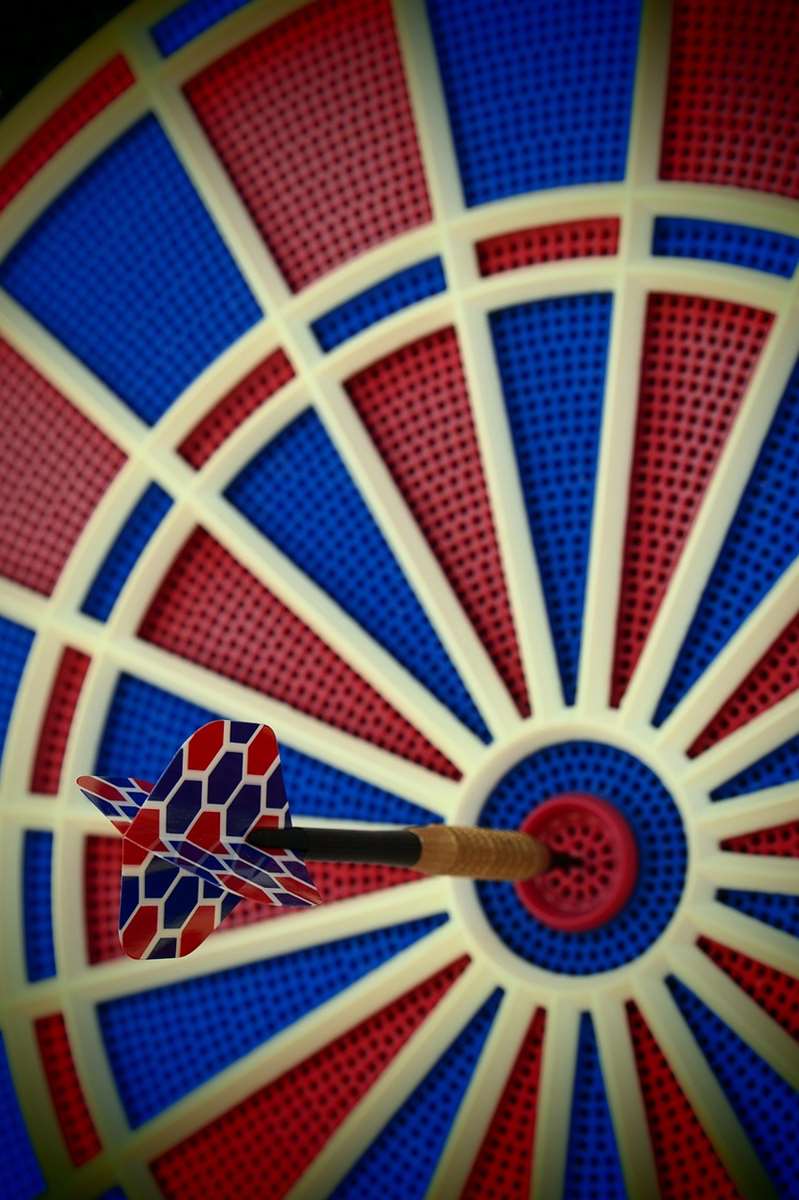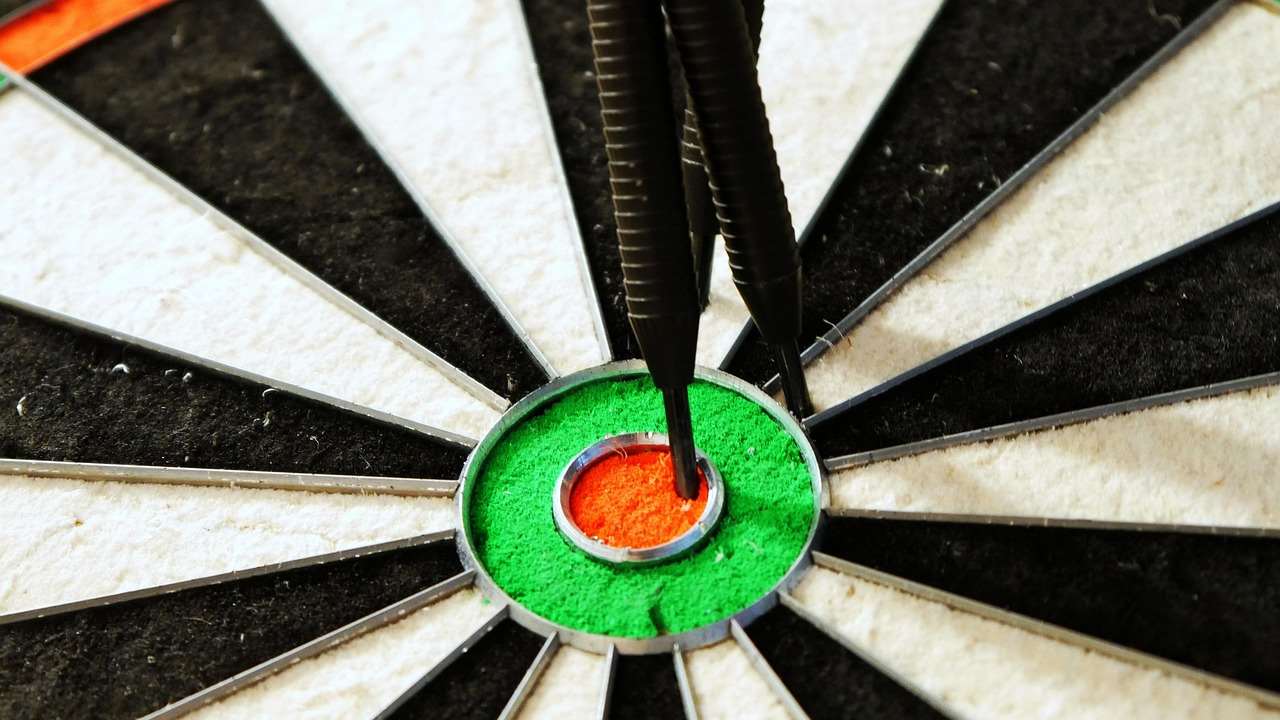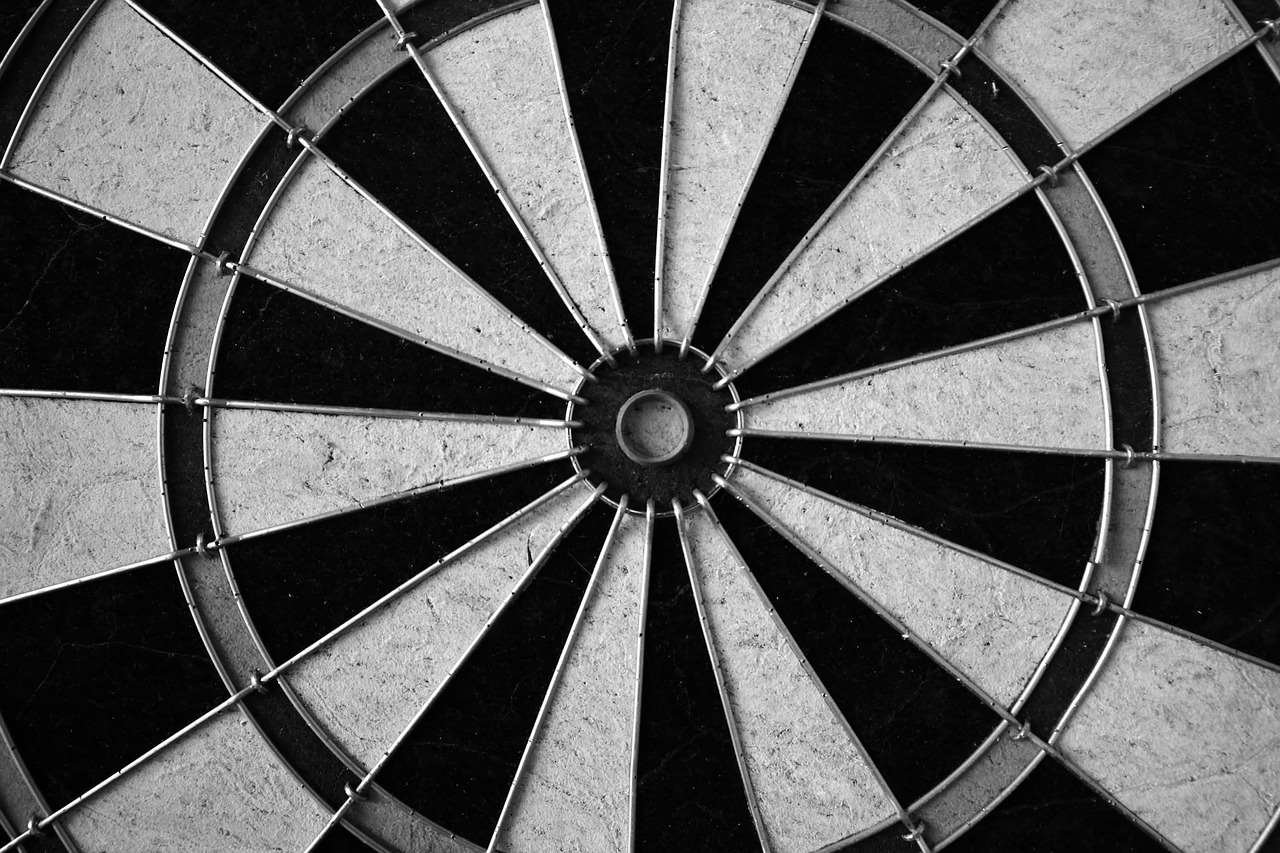The precision and craftsmanship behind a quality dartboard are crucial to the game, making the process of dart board manufacturing a fascinating blend of tradition and technology. This article unveils the intricate steps involved in creating a high-quality dartboard, from selecting the right sisal fibers to the final finishing touches, ensuring you’ll understand what makes a board great and how it’s made. We’ll also explore various aspects like bristle selection, compression techniques, and the importance of a consistent playing surface.
⚠️ Still Using Pen & Paper (or a Chalkboard)?! ⚠️
Step into the future! The Dart Counter App handles all the scoring, suggests checkouts, and tracks your stats automatically. It's easier than you think!
Try the Smart Dart Counter App FREE!Ready for an upgrade? Click above!
The Journey of Sisal: From Plant to Playing Surface
The heart of any good dartboard lies in its sisal fibers. These fibers, harvested primarily from the *Agave sisalana* plant, undergo a transformation from raw material to the tightly packed surface we aim our darts at. Let’s delve into the crucial steps involved in this process.
Sisal Fiber Selection and Preparation
The journey begins with selecting the right sisal. Not all sisal is created equal; manufacturers look for fibers that are strong, flexible, and of a consistent length. Once harvested, the fibers are cleaned and dried, removing any impurities that could compromise the final product. The drying process is critical; too much moisture can lead to mold growth, while over-drying can make the fibers brittle. The selected fibers are then meticulously combed and aligned to ensure consistent density and prevent weak spots in the finished board.

Compression and Density: Achieving the Ideal Playing Surface
The secret to a long-lasting dartboard is its density. The sisal fibers are compressed together with tremendous force to create a solid, uniform surface. This compression process is where **dart board manufacturing** truly shines. Different manufacturers employ various techniques, some using hydraulic presses and others utilizing custom-designed machinery. The goal is always the same: to create a board that can withstand repeated impacts without excessive wear and tear. A well-compressed board will have minimal “give” when a dart hits it, resulting in fewer bounce-outs and a more consistent playing experience. The depth of the sisal also plays a vital role in dart retention, preventing them from falling out easily.
Even density across the entire board is essential. Variations in density can lead to uneven wear and inconsistent dart scores. Reputable manufacturers invest heavily in quality control to ensure that every section of the board meets their exacting standards.
The Metalwork: Spider, Number Ring, and Beyond
While the sisal forms the primary playing surface, the metal components of a dartboard are equally important. The spider (the wireframe dividing the scoring segments), the number ring, and the mounting hardware all contribute to the overall quality and durability of the board.
Spider Design and Materials
The spider’s design has a significant impact on scoring potential. Thinner spiders and those embedded deeper into the sisal surface minimize bounce-outs. Innovations in spider design, such as radial wires and staple-free construction, have revolutionized the game, reducing obstructions and improving scoring accuracy. Modern spiders are typically made from high-tensile steel, which is strong and resistant to bending or breaking. Some manufacturers even use triangular or “knife-edged” wire to further reduce deflection.
Traditional spiders were often attached with staples, which could lead to deflections and increased wear around the staple points. Staple-free spiders are now the norm in high-quality boards, offering a smoother, more consistent playing surface. These staple-free designs can improve your dart board oche dimensions, as they are less intrusive on the playing surface.

Number Ring and Mounting Hardware
The number ring is another crucial component, providing visual cues for scoring and ensuring proper segment identification. The numbers must be clear, legible, and resistant to fading or scratching. High-quality number rings are often made from durable plastics or powder-coated steel, designed to withstand years of use. The mounting hardware is equally important, ensuring that the dartboard is securely attached to the wall and remains stable during play. A wobbly dartboard can be frustrating and can affect your aim. Look for boards that come with robust mounting brackets and clear installation instructions.
The Fine Details: Paint, Finishing, and Quality Control
Once the sisal is compressed and the metal components are in place, the **dart board manufacturing** process moves on to the finishing touches. These details might seem minor, but they can significantly impact the board’s appearance, durability, and overall playing experience.
Paint Application and Color Fastness
The paint used to color the scoring segments must be durable and colorfast. Poor quality paint can fade quickly, making it difficult to distinguish between segments. Reputable manufacturers use specialized paints that are designed to resist fading and chipping. The paint is typically applied using a spraying technique to ensure even coverage and prevent drips or streaks. The correct balance between colors in the quadrants assists greatly during a game.
The choice of colors is also important. Traditional dartboards use a combination of black, white, green, and red, which are easily distinguishable under most lighting conditions. The contrast between these colors helps players quickly identify their target segments.
Quality Control and Testing
Before a dartboard leaves the factory, it undergoes rigorous quality control testing. This testing can involve checking the density of the sisal, the alignment of the spider, the color fastness of the paint, and the overall appearance of the board. Some manufacturers even use robotic testing machines to simulate thousands of dart impacts and assess the board’s durability. Boards that fail to meet the required standards are rejected, ensuring that only the highest quality products reach the market. Using the best darts scoring app such as Best darts scoring app to verify your scores adds another level of security.

Advanced Techniques in Dart Board Manufacturing
Modern dart board manufacturing continues to evolve, with new techniques and materials being developed to improve performance and longevity. Some of the most notable advancements include:
Staple-Free Technology
As mentioned earlier, staple-free spiders are becoming increasingly common. These spiders are attached to the dartboard using a different method, such as adhesive or a tension-based system, which eliminates the need for staples and creates a smoother playing surface. This reduces bounce-outs and improves scoring consistency. Staple-free boards are particularly popular among serious dart players who demand the highest level of performance.
Self-Healing Fibers
Some manufacturers are experimenting with sisal fibers that have self-healing properties. These fibers are treated with special coatings or additives that allow them to recover more quickly from dart impacts. This can extend the life of the dartboard and maintain its playing surface for longer.
Electronic Dartboards
While traditional sisal dartboards remain popular, electronic dartboards are also a significant part of the market. These boards use electronic sensors to detect dart impacts and automatically calculate scores. Electronic dartboards are often used in bars and recreational settings, and they offer a variety of game modes and scoring options. The manufacturing process for electronic dartboards involves integrating these sensors into the board’s surface, requiring precision and careful calibration.

Choosing the Right Dartboard: Key Considerations
Understanding the dart board manufacturing process can help you make an informed decision when purchasing a dartboard. Here are some key considerations to keep in mind:
- Sisal Quality: Look for boards made from high-quality sisal fibers that are tightly compressed and free from defects.
- Spider Design: Choose a board with a thin, staple-free spider to minimize bounce-outs.
- Durability: Consider the overall construction and materials used to ensure that the board will withstand years of use.
- Price: Dartboards range in price from relatively inexpensive to quite expensive. Set a budget and look for a board that offers the best value for your money.
Also, consider any additional equipment you may require such as a dart score keeper for sale. Or even how hbs darts liga work.
Maintaining Your Dartboard for Longevity
Even the best-made dartboard requires some maintenance to keep it in top condition. Here are a few tips for maintaining your dartboard:
- Rotate the Board: Regularly rotate the board to distribute wear evenly across the playing surface.
- Remove Loose Fibers: Occasionally remove any loose fibers that may accumulate on the board.
- Avoid Moisture: Keep the dartboard away from moisture to prevent mold growth.
- Use Sharp Darts: Use sharp darts to minimize damage to the sisal fibers.

The Future of Dart Board Manufacturing
The future of dart board manufacturing promises even more innovation and improvements. As technology advances, we can expect to see new materials, designs, and manufacturing processes that further enhance the playing experience. From self-healing fibers to smart dartboards that track your performance, the possibilities are endless. The commitment to quality and precision will continue to drive the industry forward, ensuring that dart players of all levels can enjoy the game for years to come.
Ultimately, a great dartboard is a testament to the skill and dedication of the people who create it. By understanding the intricacies of dart board manufacturing, you can appreciate the craftsmanship that goes into every board and make a more informed decision when choosing the right one for your game.
Conclusion
Understanding the dart board manufacturing process sheds light on the craftsmanship and precision required to create a quality board. From sisal selection to the innovative spider designs, each step contributes to a superior playing experience. By considering factors like sisal quality, spider design, and durability, you can select a dartboard that enhances your game and lasts for years to come. Remember to maintain your board properly through regular rotation and avoiding moisture to maximize its lifespan. Now, equipped with this knowledge, go out there and choose the perfect dartboard to elevate your game! Start practicing and maybe you will know when is the darts masters final.
Hi, I’m Dieter, and I created Dartcounter (Dartcounterapp.com). My motivation wasn’t being a darts expert – quite the opposite! When I first started playing, I loved the game but found keeping accurate scores and tracking stats difficult and distracting.
I figured I couldn’t be the only one struggling with this. So, I decided to build a solution: an easy-to-use application that everyone, no matter their experience level, could use to manage scoring effortlessly.
My goal for Dartcounter was simple: let the app handle the numbers – the scoring, the averages, the stats, even checkout suggestions – so players could focus purely on their throw and enjoying the game. It began as a way to solve my own beginner’s problem, and I’m thrilled it has grown into a helpful tool for the wider darts community.